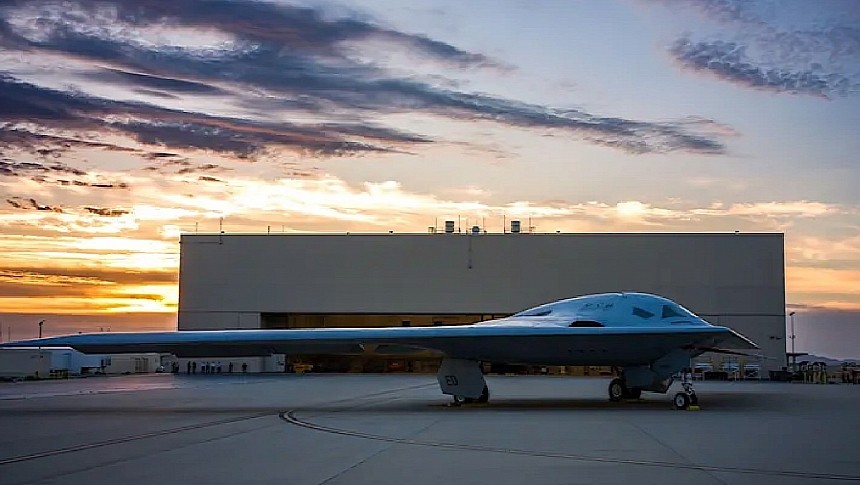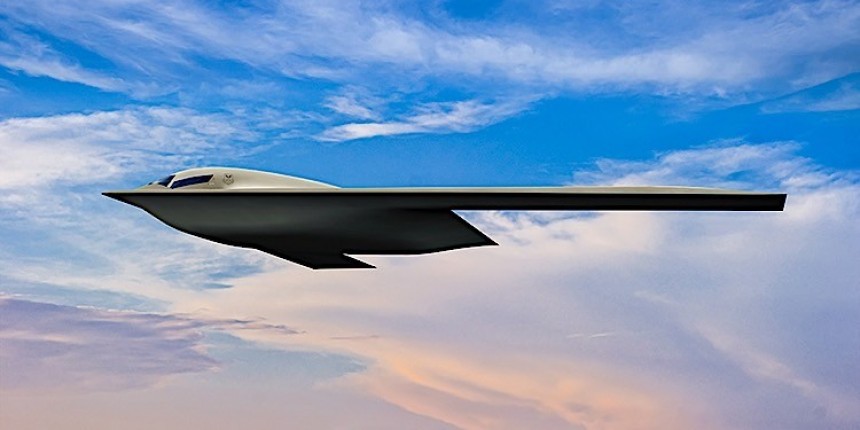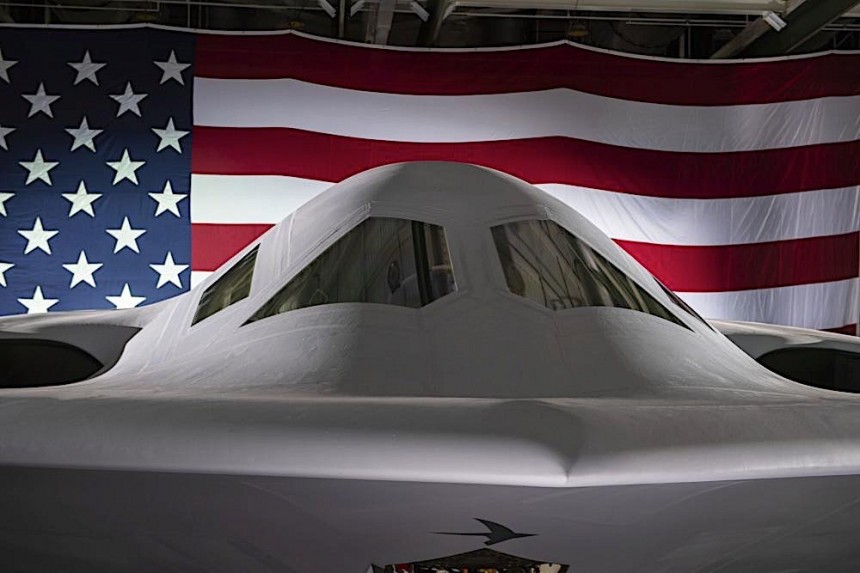At the time of writing the U.S. Air Force is possibly the biggest and most capable organization of its kind in the world. With an estimated 5,200 aircraft in its inventory (of which less than half is at a high readiness state), the USAF is a force few in this world would be capable of opposing.
The bulk of the aircraft inventory (over 2,000 units) is made up of jets, be they used for military action or for training purposes. At the opposite end are the country's bombers, which in 2023 counted just 116 units, according to Statista.
I'm talking here, of course, solely about the aircraft destined from the get-go to function as a bomber, because we all know some jets can more than adequately perform that role at a significantly smaller scale.
As far as particular bomber aircraft go, we're talking solely about three families: the veteran B-52 Stratofortress (in service since 1955), the relatively younger B-1B Lancer (first flown in 1986), and the youngest of the bunch, the 1997-born B-2 Spirit.
That means the U.S. hasn't flown a brand-new bomber for 26 years now. That changed at the end of this week, when the upcoming B-21 Raider took to the sky for the first time, thus becoming the first new one to fly in decades.
The plane was first shown publicly, although in very unrevealing images, back at the end of last year, and popped up in the news sporadically ever since. Although the plane's first flight should have been a momentous occasion, it was of course kept secret and we only learned of it thanks to plane spotters who live out their days in the vicinity of the Northrop Grumman facility in California where it is being tested.
The company responsible for the plane did however mark the moment by releasing a list of details about the plane, including some that may be considered fresh. At least as far as what the plane is supposed to do, as its technical specs are still kept under wraps.
We'll start with the things we already know, the most important of which is the plane's purpose. The Raider has been designed to completely replace the existing fleet of B-1B Lancer and B-2 Spirit, and it will fly accompanied in the sky solely by the Stratofortress – a plane that will continue to be flown until it becomes the world's first aircraft to still be in operation a century after it was originally made.
It will be the Raider however the one that will form "the backbone of the future U.S. air power." To become that the USAF plans to purchase about 100 of these things when they are ready for operation.
Northrop Grumman calls the plane, no more and no less, the "world’s first sixth-generation aircraft to reach the skies." It probably is, but we only get hints as to what that is supposed to mean exactly.
We're told the flying wing machine will be drowning in next-generation stealth technologies that should allow it to "penetrate the toughest defenses for precision strikes anywhere in the world."
It will use an open architecture that should allow for the integration of better and more advanced weapons and capabilities, as they become available throughout the plane operational life.
The plane's main task is to carry an assortment of conventional and nuclear weapons, either in stand-off or direct attack forms, and if need be fire them at the enemy. Because of its stealth capabilities, it will likely be used for intelligence, surveillance and reconnaissance (ISR) purposes as well, but also for electronic attack and multi-domain networking.
As for the hardware it's supposed to pack, there are many unknowns. The plane is to have anywhere between two and four engines, probably from the Pratt & Whitney F135 family. Images snapped by amateur photographers during this week's flight show the plane will be using two of them, but their exact capabilities in this application are of course not known.
The cost of a single B-21 Raider is estimated at around $750 million, a cost that may seem great but is, according to Northrop Grumman, kept within reasonable limits by the development and manufacturing approach (based on partnerships) taken with the plane.
Although it doesn't specifically explain what it means by this, the company also claims the Raider will be "less costly to maintain" than existing aircraft. According to Reuters, keeping a Lancer airborne costs $60,000 per hour, while a B-2 is a tad more expensive, at $65,000.
America's newest nuclear bomber is technically scheduled to become operational by the middle of the decade, just ten years after the contract for it was initially awarded. Even in the most optimistic of scenarios though we probably won't see it deployed in active service in large enough numbers to make a difference by 2040.
We only hope we'll learn a lot more about it until then, as the suspense is not good for an aviation buff's heart.
I'm talking here, of course, solely about the aircraft destined from the get-go to function as a bomber, because we all know some jets can more than adequately perform that role at a significantly smaller scale.
As far as particular bomber aircraft go, we're talking solely about three families: the veteran B-52 Stratofortress (in service since 1955), the relatively younger B-1B Lancer (first flown in 1986), and the youngest of the bunch, the 1997-born B-2 Spirit.
That means the U.S. hasn't flown a brand-new bomber for 26 years now. That changed at the end of this week, when the upcoming B-21 Raider took to the sky for the first time, thus becoming the first new one to fly in decades.
The plane was first shown publicly, although in very unrevealing images, back at the end of last year, and popped up in the news sporadically ever since. Although the plane's first flight should have been a momentous occasion, it was of course kept secret and we only learned of it thanks to plane spotters who live out their days in the vicinity of the Northrop Grumman facility in California where it is being tested.
The company responsible for the plane did however mark the moment by releasing a list of details about the plane, including some that may be considered fresh. At least as far as what the plane is supposed to do, as its technical specs are still kept under wraps.
It will be the Raider however the one that will form "the backbone of the future U.S. air power." To become that the USAF plans to purchase about 100 of these things when they are ready for operation.
Northrop Grumman calls the plane, no more and no less, the "world’s first sixth-generation aircraft to reach the skies." It probably is, but we only get hints as to what that is supposed to mean exactly.
We're told the flying wing machine will be drowning in next-generation stealth technologies that should allow it to "penetrate the toughest defenses for precision strikes anywhere in the world."
It will use an open architecture that should allow for the integration of better and more advanced weapons and capabilities, as they become available throughout the plane operational life.
The plane's main task is to carry an assortment of conventional and nuclear weapons, either in stand-off or direct attack forms, and if need be fire them at the enemy. Because of its stealth capabilities, it will likely be used for intelligence, surveillance and reconnaissance (ISR) purposes as well, but also for electronic attack and multi-domain networking.
The cost of a single B-21 Raider is estimated at around $750 million, a cost that may seem great but is, according to Northrop Grumman, kept within reasonable limits by the development and manufacturing approach (based on partnerships) taken with the plane.
Although it doesn't specifically explain what it means by this, the company also claims the Raider will be "less costly to maintain" than existing aircraft. According to Reuters, keeping a Lancer airborne costs $60,000 per hour, while a B-2 is a tad more expensive, at $65,000.
America's newest nuclear bomber is technically scheduled to become operational by the middle of the decade, just ten years after the contract for it was initially awarded. Even in the most optimistic of scenarios though we probably won't see it deployed in active service in large enough numbers to make a difference by 2040.
We only hope we'll learn a lot more about it until then, as the suspense is not good for an aviation buff's heart.














